Oriental Beech Tree
- October 11, 2023
- 0 comment

The Oriental Beech Tree, scientifically classified as Fagus orientalis, stands as a testament to the rich biodiversity of the eastern regions of Europe and western Asia where it is indigenous. This deciduous giant, a member of the Fagaceae family, boasts an impressive stature, often reaching heights of up to 30 meters. What makes the Oriental Beech particularly captivating is its elegant and rounded crown that offers generous shade, making it a prized addition to parks and gardens. Its bark, smooth and silver-gray, complements the glossy, dark green leaves that are alternately arranged and elliptical in shape. Come autumn, this tree transforms into a spectacle of nature, as its leaves transition to brilliant shades of yellow and orange, creating a breathtaking display. While its flowers may be small and unobtrusive, they give way to triangular nuts enclosed in spiky husks, contributing to the tree’s reproductive cycle.
One of the notable features of the Oriental Beech is its adaptability, thriving in a diverse range of soil types, from acidic to alkaline. This adaptability extends to its resilience in the face of various weather conditions, making it a hardy species. Beyond its aesthetic value, the Oriental Beech plays a crucial ecological role, providing habitat and sustenance for diverse wildlife. Its significance is not confined to its native regions, as it has found a place in landscapes around the world, appreciated for its beauty and environmental contributions. The Oriental Beech stands as a living emblem of the enduring wonders of the natural world, a testament to the intricate interplay between flora and fauna, and a reminder of the importance of preserving and appreciating our planet’s rich biological diversity.
| Characteristic | Description |
| Scientific Name | Fagus orientalis |
| Family | Fagaceae |
| Native Regions | Eastern Europe, Western Asia |
| Height | 50 to 80 feet |
| Growth rate | Moderate |
| Crown Shape | Broad, rounded |
| Habit | Upright, oval crown |
| Hardiness zones | 4-8 |
| Soil Preference | Well-drained soils |
| Disease Resistance | Generally resilient to pests and diseases, although it may face challenges such as beech bark disease in some regions |
A Brief History

The Oriental Beech Tree, scientifically known as Fagus orientalis, has a rich history rooted in the landscapes of Eastern Europe and Western Asia. This majestic deciduous tree, a member of the Fagaceae family, has graced forests for centuries, witnessing the ebb and flow of seasons and standing witness to the passage of time.
Color/Appearance
One of the most enchanting aspects of the Oriental Beech lies in its vibrant palette. In spring and summer, its leaves unfold in a glossy dark green, providing a lush canopy. Come autumn, the tree undergoes a breathtaking transformation, as its foliage turns into a kaleidoscope of brilliant yellows, oranges, and reds. The striking contrast between the seasons renders the Oriental Beech a true arboreal artist.
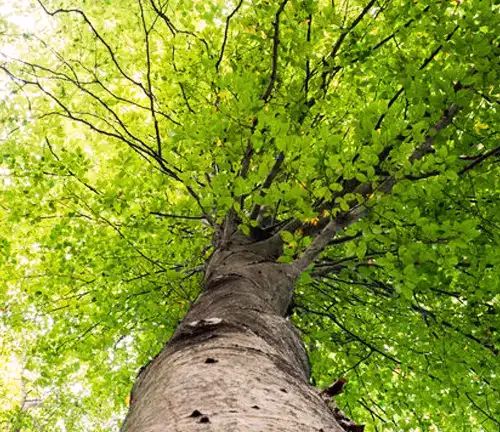
Unique Features
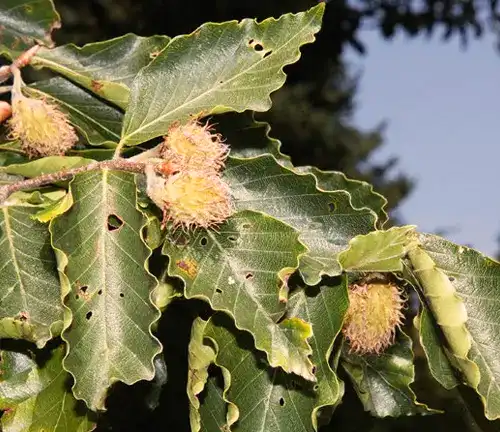
Beyond its seasonal spectacle, the Oriental Beech boasts a host of unique features. Its smooth silver-gray bark, developing a distinctive fluted texture with age, sets a dignified tone. The tree’s triangular nuts, enclosed in spiky husks, contribute to its reproductive cycle and serve as a vital food source for various wildlife.
Ecological Importance
Nature’s intricate tapestry finds a vital thread in the Oriental Beech. This tree plays a crucial role in ecosystems, providing habitat and sustenance for diverse wildlife. Birds find nesting sites in its branches, while the forest floor benefits from the nutrients released by its fallen leaves and nuts. Its presence enhances biodiversity, making it an ecological cornerstone.
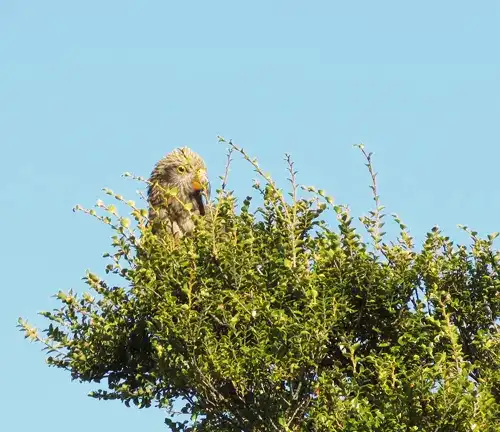

Adaptation and Resilience
The adaptability of the Oriental Beech is a testament to its resilience. Thriving in various soil types, from acidic to alkaline, and standing firm against diverse weather conditions, this tree exemplifies nature’s ability to endure and flourish in the face of change.
Cultivation and Care
For those seeking to cultivate the Oriental Beech, understanding its preferences is key. While it prefers well-drained soils, its adaptability allows it to thrive in different environments. Cultivating this tree requires patience, as its slow to moderate growth rate results in a majestic specimen that rewards the caretaker with years of natural beauty.
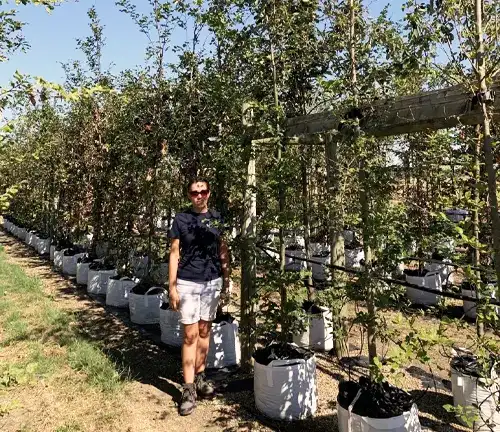
Wood Products and Applications

The fine-grained, moderately hard wood of the Oriental Beech has found its way into various applications. Historically prized for its durability and attractive color, this wood has been crafted into furniture, flooring, and tool handles, adding a touch of timeless elegance to human creations.

Other Uses
Beyond its wood, the Oriental Beech has other practical uses. In some cultures, it has been incorporated into traditional medicine, showcasing the diverse ways in which humanity interacts with and values this remarkable tree. Additionally, the nuts produced by the tree are edible, offering a source of sustenance.
Threats and Conservation
While not currently considered threatened on a global scale, local populations of the Oriental Beech may face challenges. Habitat loss, climate change, and the introduction of invasive species pose potential threats. Conservation efforts are crucial to ensure the continued health and vitality of this species.
Benefits
The benefits of the Oriental Beech extend beyond aesthetics. Its role in carbon sequestration, soil health, and support of wildlife populations contribute to the overall well-being of ecosystems. Furthermore, its cultivation in urban areas enhances air quality and provides a haven of tranquility.
Conclusion
Oriental Beech Tree stands as a majestic testament to the enduring beauty and ecological significance of the natural world. From its origins in Eastern Europe and Western Asia to its widespread cultivation in diverse landscapes globally, this deciduous giant weaves a story of resilience and adaptability. Its annual metamorphosis from glossy green foliage to a vibrant tapestry of autumn hues enchants observers, while its role in providing habitat, sustenance, and contributing to forest ecosystems underscores its vital ecological importance. Beyond its aesthetic allure, the Oriental Beech demonstrates an ability to thrive in varying soil conditions and withstand the tests of time. Whether appreciated for its fine-grained wood in the realm of craftsmanship or valued for its contributions to urban environments, this tree encapsulates the delicate balance between humanity and the natural environment. As we continue to cherish and conserve the Oriental Beech, we ensure that its legacy of beauty, adaptability, and environmental stewardship endures for generations to come.
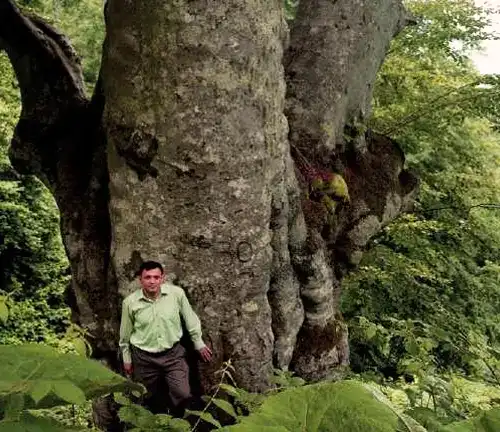
Frequently Asked Questions (FAQs)
- Do Oriental Beech Trees produce nuts every year?
No, Oriental Beech Trees typically exhibit a mast fruiting pattern, meaning they produce a significant quantity of nuts (also known as mast) every two to three years. This irregular fruiting behavior is thought to be an adaptive strategy, ensuring the survival of the species during periods of higher seed predation. - Are there specific varieties of Oriental Beech known for unique characteristics?
Yes, there are cultivars and varieties of the Oriental Beech that have been selectively bred for particular features. For example, the ‘Dawyck’ variety is known for its columnar growth habit, offering a more vertical silhouette compared to the typical rounded crown of the species. - Can Oriental Beech Trees be grown in urban environments with air pollution?
Yes, Oriental Beech Trees are known for their adaptability, and they can tolerate urban conditions, including air pollution. Their resilience makes them a suitable choice for planting in cities and urban areas, contributing not only to aesthetics but also to air quality improvement. - Are the nuts produced by Oriental Beech Trees edible for humans?
Yes, the nuts produced by Oriental Beech Trees are edible. While they are not as commonly consumed as some other nuts, they have historically been used as a food source. However, it’s essential to note that the taste and texture may differ from more widely consumed nuts like almonds or walnuts. - Do Oriental Beech Trees face any specific pests or diseases?
While generally resilient, Oriental Beech Trees can face challenges, including the potential threat of beech bark disease. This disease is caused by a combination of scale insects and a fungus, which can weaken and ultimately kill the tree. Monitoring for signs of disease and implementing appropriate preventive measures is crucial for maintaining the health of Oriental Beech populations.




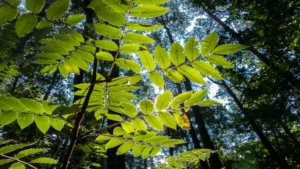


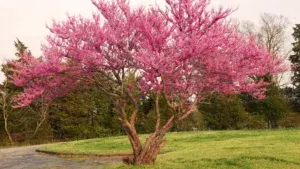
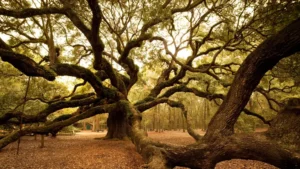

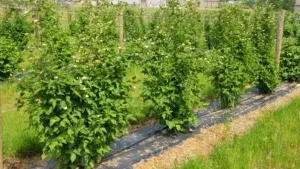

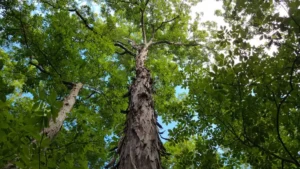
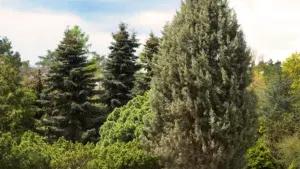
Leave your comment